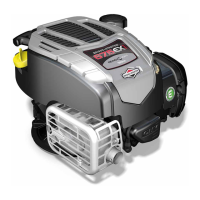
Do you have a question about the Briggs & Stratton 100000 650 Series and is the answer not in the manual?
| Brand | Briggs & Stratton |
|---|---|
| Model | 100000 650 Series |
| Category | Engine |
| Language | English |
Visual representation of potential hazards and operational controls.
Product components may contain chemicals known to cause cancer or birth defects.
Engine exhaust contains chemicals known to cause cancer or birth defects.
Instructions for safely adding fuel to the engine, including cooling time and ventilation.
Ensure components are secure and how to start a flooded engine.
Avoid tipping the engine and do not choke the carburetor to stop.
Fuel tank must be empty if draining oil from top fill tube to prevent fire.
Fuel tank must be empty to prevent fuel leaks and fire or explosion.
Pull starter cord slowly until resistance, then pull rapidly to avoid kickback.
Ensure direct-coupled components are securely attached to prevent kickback.
Operate with guards in place and keep hands away from rotating parts.
Tie up long hair, remove jewelry, avoid loose clothing.
Allow engine parts, especially muffler, to cool before touching.
Remove accumulated debris from muffler and cylinder areas.
Do not start engine if flammable gases are present.
Avoid using flammable starting fluids.
Disconnect spark plug wire before adjustments or repairs.
Ensure spark plug wire is disconnected before servicing.
Install CO alarms in homes, garages, sheds, or other enclosed spaces.
Never run the product in enclosed or partially enclosed spaces due to CO build-up.
Ensure engine exhaust is directed away from people and living areas.
Prevents accidental starting during maintenance.
Disconnect spark plug wire before adjustments or repairs.
Isolates the electrical system before maintenance.
Tampering with governor can lead to over-speeding and damage.
Using incorrect parts may cause damage or injury.
Damaging the flywheel can cause catastrophic failure during operation.
Use approved spark plug tester and do not check with plug removed.
Step-by-step guide for checking and adding engine oil.
Procedure for safely adding fuel to the tank.
Instructions for starting the engine, including safety warnings.
Operate ONLY outside, far from windows, doors, and vents to avoid CO poisoning.
Pull cord slowly to resistance, then rapidly to start, avoiding kickback.
Pull cord slowly to resistance, then rapidly to avoid injury from kickback.
Release the stop lever to shut off the engine.
Move throttle control to the stop position to shut off the engine.
Turn electric start switch off and remove the key.
Ensure fuel tank is empty before tipping for maintenance to prevent leaks.
Do not tamper with carburetor or governor parts to change engine speed.
Check, reset, install, and tighten spark plug to specifications.
Empty fuel tank before draining oil from top fill tube to prevent fire or explosion.
Never operate engine without air cleaner or filter installed.
Engine parts, especially muffler, become extremely hot.
Remove accumulated debris from muffler and cylinder areas.
Fuel and vapors are flammable and explosive; fire or explosion can cause severe burns or death.
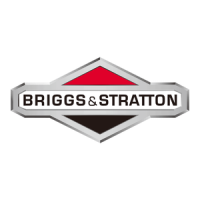




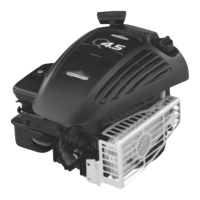
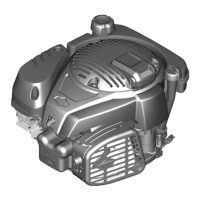
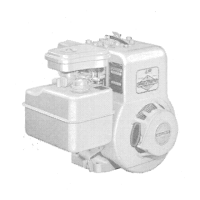



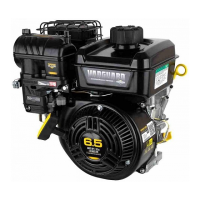
